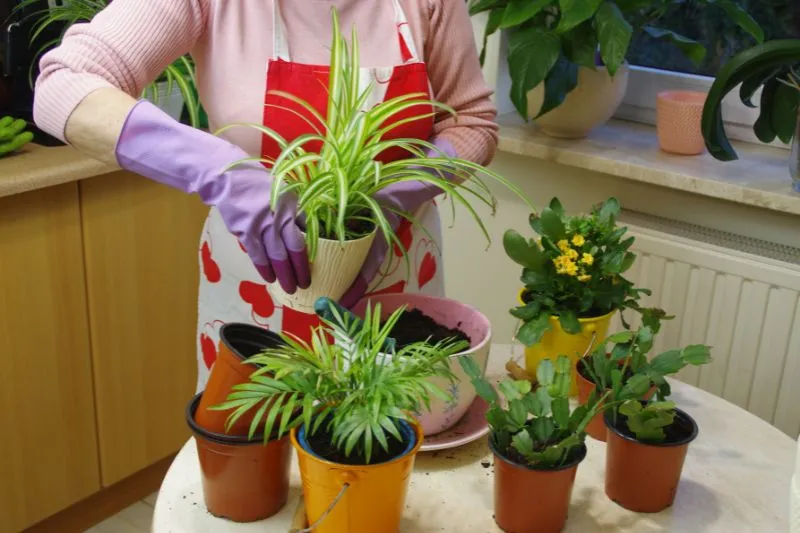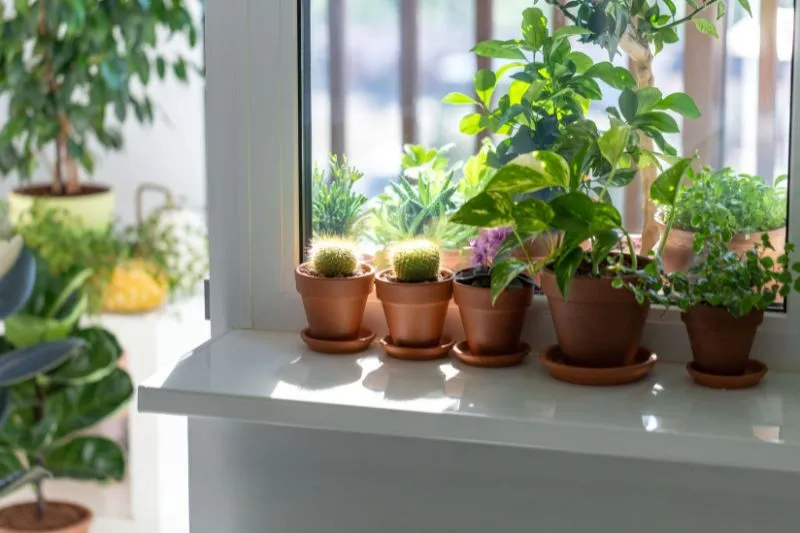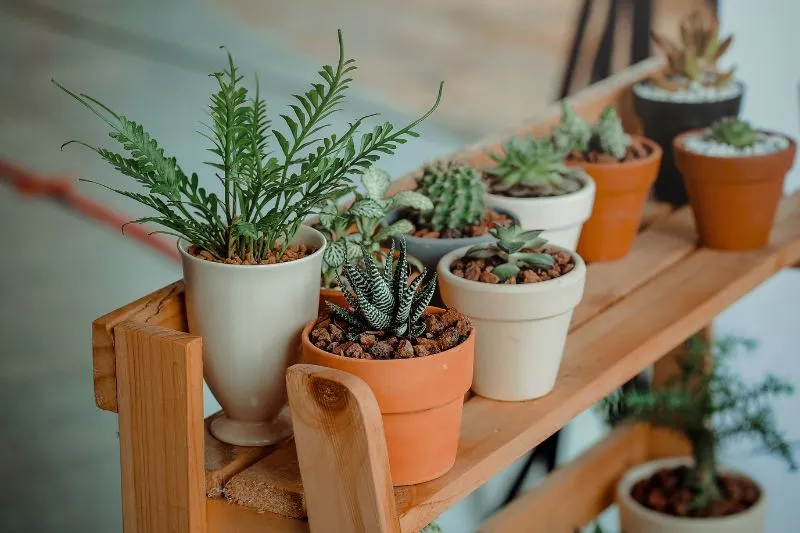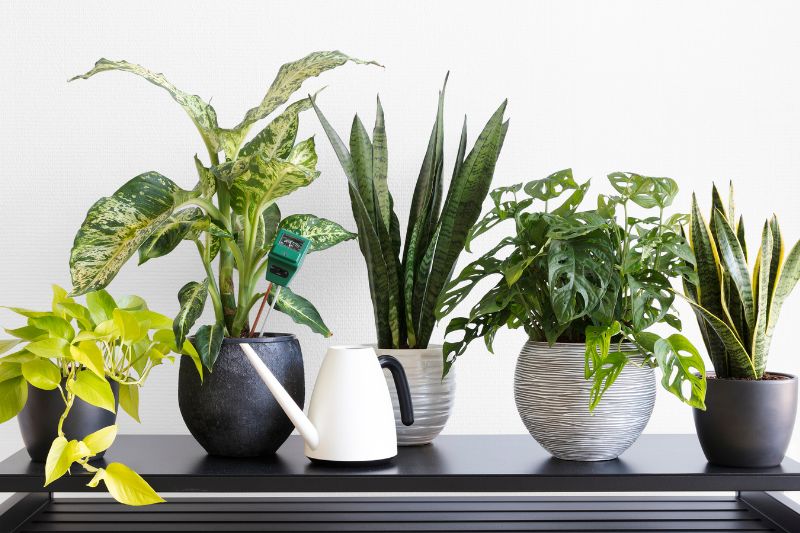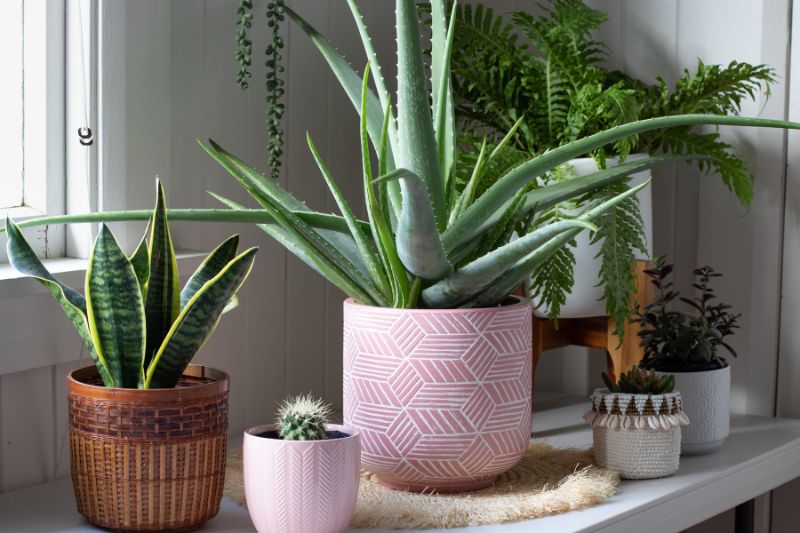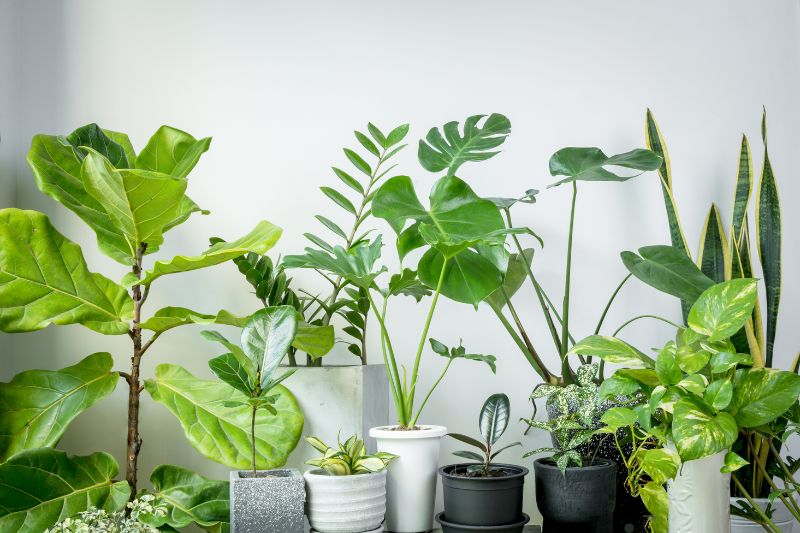
Introduction
In today’s fast-paced world, where urban living often separates us from nature, indoor plants offer a refreshing way to bring the outside in. Houseplants not only enhance the aesthetic appeal of your home but also contribute to a healthier living environment. Whether you’re a seasoned plant enthusiast or a beginner looking to add a touch of greenery to your space, this guide explores the most common houseplants, their care requirements, and the numerous benefits they bring to your home.
Indoor plants have been a part of human living spaces for centuries. They add beauty, improve air quality, reduce stress, and create a more inviting atmosphere. In this comprehensive guide, we’ll delve into the world of house plants, exploring the best varieties for beginners and seasoned gardeners alike, offering tips on care and maintenance, and highlighting the many benefits these green companions bring to our homes.

Get 75% OFF Now
1. Top 20 Common Houseplants
Let’s explore some of the most popular house plants that are easy to grow and care for, making them perfect for any indoor setting.
1.1. Spider Plant (Chlorophytum comosum)
The Spider Plant is one of the most adaptable and easy-to-care-for houseplants. Its arching leaves and tiny plantlets make it a favorite for hanging baskets and shelves.
- Light: Bright, indirect sunlight
- Water: Allow the soil to dry out between waterings
- Benefits: Known for purifying the air by removing toxins such as formaldehyde
Example: A Spider Plant is perfect for a beginner who wants a low-maintenance plant that grows quickly and thrives in various environments.
1.2. Peace Lily (Spathiphyllum spp.)
The Peace Lily is renowned for its beautiful white blooms and lush green leaves. It’s an excellent choice for adding elegance to any room.
- Light: Low to medium, indirect sunlight
- Water: Keep the soil moist but not soggy
- Benefits: Excellent at filtering out harmful chemicals like ammonia and benzene
Example: Place a Peace Lily in your bathroom or bedroom to enjoy its air-purifying qualities and subtle beauty.
1.3. Snake Plant (Sansevieria trifasciata)
The Snake Plant, also known as Mother-in-Law’s Tongue, is famous for its striking upright leaves and minimal care needs.
- Light: Low to bright indirect sunlight
- Water: Water sparingly; allow soil to dry between waterings
- Benefits: Converts CO2 into oxygen at night, making it ideal for bedrooms
Example: The Snake Plant is perfect for a bedroom as it produces oxygen even at night, contributing to better sleep quality.
1.4. Aloe Vera (Aloe barbadensis miller)
Aloe Vera is not just a popular skincare ingredient but also a beautiful succulent that adds charm to your indoor space.
- Light: Bright, indirect sunlight
- Water: Allow the soil to dry out between waterings
- Benefits: Gel inside the leaves has medicinal properties for burns and skin irritation
Example: Aloe Vera can be placed on a sunny windowsill in your kitchen, where it can be used both decoratively and for its healing properties.
1.5. Pothos (Epipremnum aureum)
Pothos, known for its trailing vines, is an excellent plant for beginners due to its resilience and adaptability.
- Light: Low to bright indirect sunlight
- Water: Let the soil dry out between waterings
- Benefits: Removes common toxins like formaldehyde and xylene from the air
Example: Pothos can be trained to climb or left to trail, making it versatile for various indoor displays.
Read more blog: Discover the Top 5 Home Design Trends 2024
1.6. Monstera Deliciosa
The Monstera Deliciosa, often referred to as the Swiss Cheese Plant, is known for its large, perforated leaves that create a dramatic tropical effect.
- Light: Bright, indirect sunlight
- Water: Keep the soil evenly moist, but not soggy
- Benefits: Adds a bold, lush look to interiors with its unique foliage
Example: Monstera Deliciosa makes a striking focal point in living rooms and offices with its bold foliage.
1.7. ZZ Plant (Zamioculcas zamiifolia)
The ZZ Plant is prized for its glossy, dark green leaves and exceptional ability to tolerate neglect.
- Light: Low to bright indirect sunlight
- Water: Water when the soil is completely dry
- Benefits: Ideal for low-light areas, and removes toxins like xylene and toluene
Example: The ZZ Plant is perfect for office spaces where lighting might be inconsistent, as it requires very little care.
1.8. Rubber Plant (Ficus elastica)
The Rubber Plant is appreciated for its broad, glossy leaves that come in various shades of green, purple, and burgundy.
- Light: Bright, indirect sunlight
- Water: Keep the soil moist; avoid letting it dry completely
- Benefits: Known for its ability to remove toxins from the air and improve indoor humidity
Example: The Rubber Plant makes an excellent statement piece for large living areas with its lush foliage.
1.9. Boston Fern (Nephrolepis exaltata)
The Boston Fern is celebrated for its feathery, lush fronds that add a soft touch to indoor spaces.
- Light: Indirect sunlight; prefers higher humidity
- Water: Keep the soil consistently moist
- Benefits: Excellent air purifier, particularly effective at removing formaldehyde
Example: Ideal for bathrooms, the Boston Fern thrives in humid conditions and adds a fresh look.
1.10. Jade Plant (Crassula ovata)
The Jade Plant is a succulent known for its thick, fleshy leaves and tree-like growth habit.
- Light: Bright, indirect sunlight
- Water: Water when the soil is completely dry
- Benefits: Symbolizes prosperity and good luck, often used in Feng Shui practices
Example: The Jade Plant is perfect for sunny windowsills and can serve as a living good-luck charm in your home.
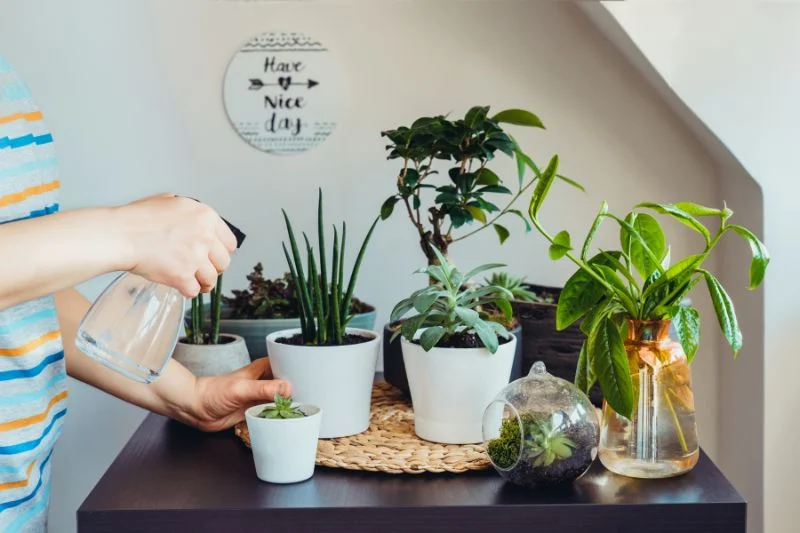

Get 75% OFF Now
1.11. Fiddle Leaf Fig (Ficus lyrata)
The Fiddle Leaf Fig is famous for its large, violin-shaped leaves and towering presence, making it a trendy choice for modern interiors.
- Light: Bright, indirect sunlight
- Water: Keep soil consistently moist, but do not overwater
- Benefits: Adds dramatic height and texture to living spaces
Example: Perfect for spacious rooms, the Fiddle Leaf Fig creates a striking focal point with its unique foliage.
1.12. Philodendron
Philodendrons are beloved for their heart-shaped leaves and trailing or climbing nature, making them versatile for various indoor displays.
- Light: Low to bright indirect sunlight
- Water: Allow the soil to dry out between waterings
- Benefits: Easy to care for, ideal for filling empty corners or creating lush displays
Example: Philodendrons work well as hanging plants or trailing from bookshelves, adding a tropical feel to any room.
1.13. Bamboo Palm (Chamaedorea seifrizii)
The Bamboo Palm is appreciated for its elegant fronds and ability to thrive in low-light conditions, making it a favorite for offices and shaded rooms.
- Light: Low to medium, indirect sunlight
- Water: Keep soil evenly moist
- Benefits: Excellent at filtering out formaldehyde, benzene, and other toxins
Example: A Bamboo Palm can brighten up any dark corner with its graceful, arching leaves, adding a touch of nature to your indoor environment.
1.14. Cast Iron Plant (Aspidistra elatior)
The Cast Iron Plant is known for its ability to withstand neglect and poor growing conditions, making it ideal for busy individuals.
- Light: Low to bright indirect sunlight
- Water: Allow soil to dry between waterings
- Benefits: Hardy and resilient, perfect for low-light areas
Example: A Cast Iron Plant is an excellent choice for those with busy lifestyles, as it requires minimal care and can thrive in less-than-ideal conditions.
1.15. English Ivy (Hedera helix)
English Ivy is a classic houseplant known for its trailing vines and versatile growing habits, perfect for hanging baskets or climbing trellises.
- Light: Bright, indirect sunlight
- Water: Keep soil consistently moist
- Benefits: Known for its air-purifying properties and ability to reduce mold levels
Example: English Ivy can be trained to grow along walls or trellises, providing an elegant and natural touch to indoor spaces.
1.16. Peperomia
Peperomia plants come in various shapes and sizes, making them versatile and easy to care for with their fleshy leaves and attractive foliage patterns.
- Light: Low to bright indirect sunlight
- Water: Allow soil to dry between waterings
- Benefits: Low-maintenance and adaptable, perfect for tabletops and desks
Example: Peperomia plants are perfect for adding a pop of color and texture to small spaces or office desks.
1.17. Peace Lily
The Peace Lily is renowned for its beautiful white blooms and lush green leaves. It’s an excellent choice for adding elegance to any room.
- Light: Low to medium, indirect sunlight
- Water: Keep the soil moist but not soggy
- Benefits: Excellent at filtering out harmful chemicals like ammonia and benzene
Example: Place a Peace Lily in your bathroom or bedroom to enjoy its air-purifying qualities and subtle beauty.
1.18. Rubber Plant
The Rubber Plant is appreciated for its broad, glossy leaves that come in various shades of green, purple, and burgundy.
- Light: Bright, indirect sunlight
- Water: Keep the soil moist; avoid letting it dry completely
- Benefits: Known for its ability to remove toxins from the air and improve indoor humidity
Example: The Rubber Plant makes an excellent statement piece for large living areas with its lush foliage.
1.19. Chinese Evergreen (Aglaonema)
The Chinese Evergreen is famous for its striking foliage and ability to thrive in low-light conditions, making it perfect for offices and shaded rooms.
- Light: Low to bright indirect sunlight
- Water: Allow the soil to dry out between waterings
- Benefits: Known for its air-purifying properties and low-maintenance care
Example: The Chinese Evergreen is an excellent choice for those who want a low-maintenance plant that can brighten up darker areas of the home.
1.20. Rubber Plant
The Rubber Plant is appreciated for its broad, glossy leaves that come in various shades of green, purple, and burgundy.
- Light: Bright, indirect sunlight
- Water: Keep the soil moist; avoid letting it dry completely
- Benefits: Known for its ability to remove toxins from the air and improve indoor humidity
Example: The Rubber Plant makes an excellent statement piece for large living areas with its lush foliage.
2. Benefits of Common Houseplants
House plants offer more than just beauty; they bring a range of physical and psychological benefits that enhance our living spaces.
2.1. Air Purification
Many house plants are known for their ability to purify the air, removing harmful toxins and improving overall indoor air quality. Plants like Spider Plants, Peace Lilies, and Snake Plants are particularly effective at filtering out pollutants such as formaldehyde, benzene, and carbon monoxide.
Example: NASA’s Clean Air Study found that plants like the Peace Lily and Snake Plant can remove up to 87% of airborne toxins in 24 hours.
2.2. Improved Mental Health
Indoor plants have been shown to reduce stress, anxiety, and depression. They promote relaxation and a sense of well-being, making them valuable companions for anyone looking to improve their mental health.
Example: Studies have demonstrated that interaction with plants can lead to lower stress levels and improved mood, contributing to a more peaceful and harmonious living environment.
2.3. Enhanced Productivity and Focus
Having house plants in workspaces can increase productivity and concentration. They create a more stimulating and creative environment, enhancing cognitive function and work efficiency.
Example: A study published in the Journal of Environmental Psychology found that plants in office environments can boost productivity by up to 15%.
2.4. Humidity Regulation
Certain plants, such as Boston Ferns and Rubber Plants, help maintain humidity levels by releasing moisture into the air through transpiration. This natural humidification can benefit respiratory health and prevent dry skin and irritation.
Example: In dry climates or during winter months, indoor plants can naturally increase humidity levels, making your home more comfortable.
2.5. Aesthetic Appeal
House plants add beauty and style to any space. With various shapes, sizes, and colors, they can complement any interior design, from minimalist to bohemian.
Example: The Monstera Deliciosa’s dramatic foliage or the ZZ Plant’s sleek silhouette can serve as living art pieces, adding character and charm to your home.
2.6. Connection to Nature
House plants provide a connection to nature, which is often missing in urban settings. They bring a sense of calm and tranquility, fostering a more harmonious living environment.
Example: Integrating plants into your home can create a sanctuary-like atmosphere, offering a retreat from the hustle and bustle of daily life.
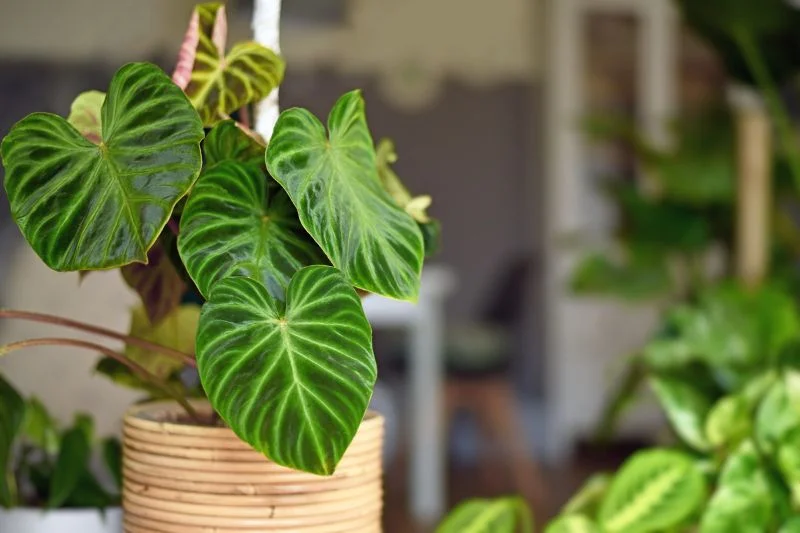
Read more blog: Top 10 Cozy Home Decor make Simple and Cheap Ideas
3. Caring for Common Houseplants
Caring for house plants may seem daunting, but understanding their needs can make it an enjoyable and rewarding experience. Here are some essential care tips:
3.1. Light Requirements
- Understanding Light Levels: Different plants have varying light needs. While some thrive in bright, indirect sunlight, others prefer low-light conditions. It’s crucial to place your plants according to their specific light requirements.
- Bright, Indirect Light: Suitable for plants like Fiddle Leaf Fig and Monstera Deliciosa. Place them near windows but out of direct sunlight.
- Low Light: Ideal for Snake Plants and ZZ Plants. These can be placed in shaded corners or rooms with limited natural light.
- Example: A south-facing window provides the brightest light, while east or west-facing windows offer moderate light levels.
3.2. Watering Practices
- Watering Frequency: Over-watering is a common mistake. Allow the top inch of soil to dry out before watering again. Succulents require less frequent watering compared to tropical plants.
- Drainage: Ensure pots have drainage holes to prevent waterlogging, which can lead to root rot.
- Example: Use a moisture meter or stick your finger into the soil to check moisture levels before watering.
3.3. Humidity and Temperature
- Humidity Levels: Many house plants thrive in higher humidity. Consider using a humidifier or misting plants like Boston Ferns and Peace Lilies regularly.
- Temperature: Maintain a consistent temperature range between 60°F and 75°F (15°C to 24°C) for optimal growth.
- Example: Placing plants in bathrooms or kitchens can naturally provide higher humidity levels.
3.4. Fertilizing
- Fertilizer Type: Use a balanced, water-soluble fertilizer to provide essential nutrients during the growing season (spring and summer).
- Frequency: Fertilize every 4-6 weeks, reducing frequency during the dormant period in winter.
- Example: Organic fertilizers, such as compost or worm castings, can enrich soil and promote healthy growth.
3.5. Pruning and Maintenance
- Pruning: Regularly trim dead or yellowing leaves to encourage new growth and maintain plant shape.
- Repotting: Repot every 1-2 years or when plants outgrow their containers. Choose pots slightly larger than the current size.
- Example: Use sharp, clean scissors or pruning shears to make precise cuts and prevent disease.
4. Troubleshooting Common HousePlant Issues
Even with the best care, house plants can encounter problems. Here are some common issues and solutions:
4.1. Yellowing Leaves
- Cause: Over-watering or lack of nutrients.
- Solution: Allow the soil to dry out between waterings and consider adding a balanced fertilizer.
- Example: Check the drainage of the pot to ensure excess water can escape, preventing root rot.
4.2. Brown Leaf Tips
- Cause: Low humidity or too much direct sunlight.
- Solution: Increase humidity by misting or using a humidifier, and move the plant to a spot with indirect sunlight.
- Example: Keep plants away from heaters or air conditioners that may dry the air.
4.3. Wilting
- Cause: Under-watering or root-bound plants.
- Solution: Water the plant thoroughly and consider repotting if roots are overcrowded.
- Example: Ensure the plant receives adequate water, but avoid letting it sit in waterlogged soil.
4.4. Pests and Diseases
- Common Pests: Spider mites, aphids, and mealybugs.
- Solution: Regularly inspect plants for pests and treat with insecticidal soap or neem oil if needed.
- Example: Isolate affected plants to prevent the spread of pests to other houseplants.
4.5. Leggy Growth
- Cause: Insufficient light.
- Solution: Move the plant to a brighter location and prune leggy stems to encourage bushier growth.
- Example: Rotate the plant regularly to ensure even light exposure and balanced growth.
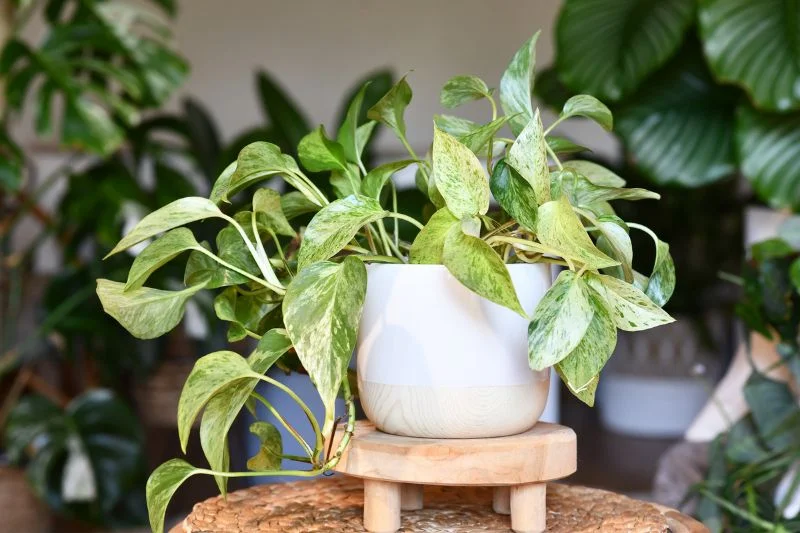

Get 75% OFF Now
FREE Try
5. Designing Your Space
Integrating house plants into your home decor enhances aesthetics and creates a more inviting atmosphere. Here are some creative ways to display plants:
5.1. Hanging Planters
- Ceiling Hooks: Use ceiling hooks to hang plants like Pothos and Spider Plants, adding vertical interest to your space.
- Macrame Hangers: Macrame hangers provide a stylish and bohemian touch, allowing you to display plants at varying heights.
- Example: Hang trailing plants near windows to catch light and create a cascading green curtain effect.
5.2. Plant Shelves
- Tiered Shelves: Arrange plants on tiered shelves to create a green oasis and showcase different heights and textures.
- Floating Shelves: Install floating shelves to display small plants like succulents and cacti, adding greenery to empty walls.
- Example: Combine books and decorative items with plants on shelves for a balanced and visually appealing display.
5.3. Terrariums and Glass Containers
- Closed Terrariums: Closed terrariums are perfect for humidity-loving plants, creating a self-sustaining environment.
- Open Terrariums: Open terrariums allow for airflow, making them suitable for succulents and air plants.
- Example: Use glass containers as unique plant displays on coffee tables or desks, adding a modern touch to your decor.
5.4. Statement Plants
- Large Focal Plants: Fiddle Leaf Figs and Rubber Plants make excellent focal points, drawing attention with their striking foliage.
- Grouping Plants: Group plants of varying sizes to create a lush, cohesive look that mimics a mini indoor jungle.
- Example: Place a large Monstera Deliciosa in the corner of a room to create a dramatic, tropical effect.
FAQ
1. What are some common houseplants for beginners?
Answer: Beginners can start with easy-to-care-for plants like Spider Plants, Pothos, Snake Plants, and Peace Lilies. These plants are resilient and adaptable, making them perfect for novice gardeners.
2. How do I know if my house plant needs watering?
Answer: Check the soil’s moisture level by inserting your finger about an inch deep. If the soil feels dry, it’s time to water. Additionally, look for signs like wilting or yellowing leaves, indicating a need for hydration.
3. Can house plants improve indoor air quality?
Answer: Yes, many house plants are effective at removing pollutants like formaldehyde, benzene, and ammonia from the air. Plants such as Snake Plants, Peace Lilies, and Spider Plants are known for their air-purifying properties.
4. What are the best house plants for low-light areas?
Answer: Low-light areas can benefit from plants like ZZ Plants, Snake Plants, and Pothos. These plants can thrive in shaded corners and rooms with limited natural light.
5. How can I increase humidity for my indoor plants?
Answer: Increase humidity by misting plants regularly, placing a humidifier nearby, or grouping plants together. Using pebble trays filled with water can also help maintain moisture levels around the plants.
6. What should I do if my house plant has pests?
Answer: Isolate the affected plant and inspect it for pests like spider mites or aphids. Treat with insecticidal soap, neem oil, or a mixture of water and dish soap to remove pests without harming the plant.
7. How often should I fertilize my house plants?
Answer: Fertilize house plants every 4-6 weeks during the growing season (spring and summer). Reduce or stop fertilizing during the winter months when plant growth slows down.
8. Can I propagate common houseplants?
Answer: Yes, many house plants can be propagated easily. For example, cuttings from Pothos and Spider Plants can be rooted in water or soil to create new plants.
9. What are the signs of overwatering house plants?
Answer: Overwatering can lead to yellowing leaves, mushy stems, and root rot. Ensure that pots have proper drainage and allow the soil to dry between waterings.
10. How can I make my house plants thrive?
Answer: To make house plants thrive, provide appropriate light, water, and humidity levels. Regularly prune and fertilize, and monitor for pests to maintain healthy growth and vibrant foliage.
Read more blog: How to Make a Small Room Look Bigger
Conclusion
Common houseplants offer a simple yet powerful way to enhance your living environment. With various shapes, sizes, and benefits, they cater to every taste and preference. Whether you’re seeking to improve air quality, reduce stress, or simply add a touch of nature to your home, these green companions are sure to bring joy and vitality.
Embrace the beauty and benefits of house plants by incorporating them into your daily life. From beginners to experienced plant lovers, there’s a plant for everyone, offering a gateway to a more connected and harmonious living space. Start your indoor gardening journey today and experience the transformative power of house plants in your home.

